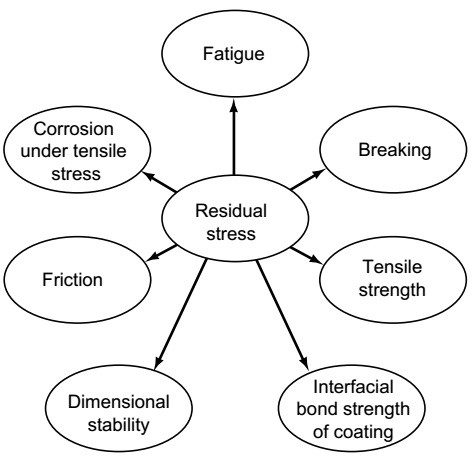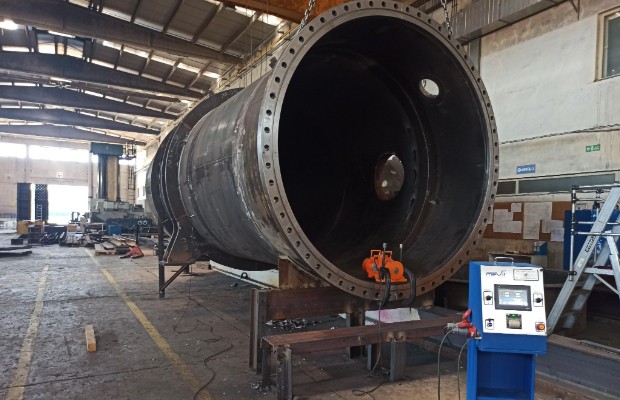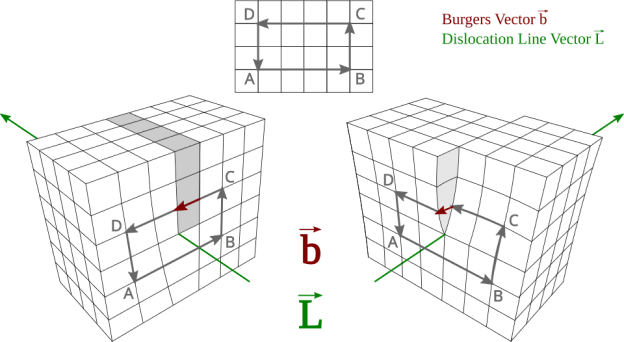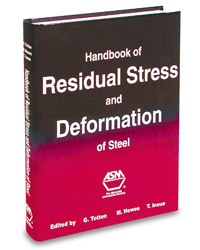

How it works ?
Understanding the mechanism behind VSR involves examining stress relaxation during cyclic loading. The relaxation occurs through microplastic deformation, where the movement of dislocations redistributes both residual elastic stresses and microstresses. The dislocation encounters a force equivalent to the combined vibratory and static stresses.


Are there any limitations about the material ?
It’s not suitable for extrusions or items heavily cold-worked. Because the material needs to be ductile to allow for plastic flow during the VSR process. Materials that are through-hardened or extensively cold-worked, like cold-rolled steel, typically exhibit limited responsiveness to the VSR process.
Is the setup and usage challenging ?
The equipment is designed for easy operation and is suitable for both shop and field applications handled by your personnel. Setting up and using it is quite straightforward. There are a few essential guidelines applicable to all cases. First, it’s important to isolate the workpiece to allow it to vibrate freely. Direct coupling between the vibration unit and the workpiece is crucial for transferring vibrational energy, achieved through clamps, fasteners, or adaptive fixtures. Once these conditions are met, vibrating the part for a minimum time based on its weight is required.
Resonance-based or Sub-harmonic VSR ?
Resonant vibrations have proven to be highly effective in reducing residual stresses through vibration. The method using resonant frequency vibrations stands out for its notable stress redistribution compared to subresonant (subharmonic) frequency approaches. Employing strong resonant vibrations, especially at high amplitudes, is highly efficient in significantly decreasing peak residual stresses in welded structures.
What is the effect of the vibrations ?
The process works by using low-frequency vibrations as a means of transmitting high-energy impacts to metal components during fabrication or machining. These vibrations create additional stress on the material, which interacts with the existing stress patterns. The outcome is a reduction in the highest stress points, leading to a more stable product. This approach helps minimize distortions that can occur randomly in unstable workpieces, resulting in a more reliable and dimensionally stable final product.
When Can I Stress Relieve a Part?
Stress relief for parts can be carried out at various stages in the manufacturing process, provided the part is accessible. Commonly, stress relief is applied at key points like after rough machining, boring, grinding, and similar stages. In the case of welded fabrications, stress relieving can be done during welding, which is particularly beneficial in preventing the accumulation of residual stress that might lead to weld cracking or distortion in certain sections.
What Size Parts Can I Treat?
The Mevit equipment is versatile and can be used on a range of shapes and sizes. It’s suitable for small items like castings, shafts, gears, or OEM products, as well as large welded machined fabrications that are too big for traditional heat treatment methods. By utilizing a specialized vibration table designed for smaller parts, you can set up the vibration system conveniently in the production area. This not only saves time but also allows you to treat multiple parts simultaneously.
Can It Replace Heat Treatment ?
In situations where heat treatment is employed for ensuring dimensional stability, surface integrity, or meeting service conditions, the vibration method offers a more cost-effective alternative. But if a change in the microstructure and mechanical properties targeted vibration method can not be replace heat treatment.
Is the vibration method approved by code ?
The American Welding Society (AWS) does endorse the use of vibratory weld conditioning for various applications, including welded joints, machinery, equipment, industrial cranes, and other material handling equipment. Specific sections of AWS codes, such as AWS D14.1 Sec. 7.7 and AWS D14.4 Sec. 10.4, outline the use of vibratory conditioning to enhance dimensional stability.
How to know when stresses have been reduced ?
The most reliable indicator remains the tangible improvement in the part’s dimensional stability. Determining stress reduction is most effectively confirmed by resolving fundamental dimensional instability issues. This becomes evident when standard measurement techniques confirm that the part now maintains dimensions that previously varied randomly.
While there have been a scientific approach suggested over the years. According to these approaches, changes in vibration frequencies are believed to occur as the stiffness of the part changes due to reduced resistance from stress. The idea is that as stress diminishes, the part becomes less rigid, leading to alterations in vibration frequencies.
The growth and/or shift of resonant peaks are connected to the influence of residual stresses, particularly shear stresses, on elastic behavior. These stresses induce local alterations in the modulus of elasticity.
Consequently, the presence of shear stresses in a metal part enhances the overall stiffness of the part. Therefore, reducing these stresses tends to lower resonance frequencies and/or facilitate the growth of resonant peaks. The observed changes in the resonant characteristics are a direct result of the modification in the distribution of residual stresses within the material.
